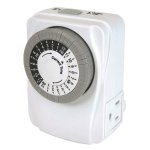powersupply
100 W
Hi all,
I am considering LiFePo4 instead of 4x SLA batteries on my scooter.
I also am getting 2 SmartBMS (set to 12s lipos, which I probably need to reprogram somehow).
Having plenty of space -weight is not a problem, too- I want everything to be on the bike and as easy to operate as can be.
I am willing to invest much time and effort to get it to be "plug it in and forget about it", for the least cost.
Right now I am stuck with the charger, I read about putting isolated (meanwell) PSU in series, but they are not CC/CV from what I understand.
What voltage do I need? 16x4.2=67.2?
Or do I need some headroom?
I do have basic knowledge of low voltage and power electronics.
Thanks in advance for your kind input!
Long version:
After reading the many posts on what chemistry, charging and balancing I am more confused than ever.
So I am turning top this great board for help.
It says disconnect the balancer or it will bleed the battery to death, then there are (expensive) chargers with balancing built in, and then I see batteries on ebay with the balancer acrually built into them (what happened to bleed to death?)
So I understand that some balancers probably draw more than others? Then there are chargers where you'd need to plug the batteries into (not possible in my setting) and disconnect them after charge.
Then some balancers you'd need to connect between the bike and the battery (or put between battery and charger for charging?)
Then the chargers: CC/CV, got it, but balancing AFTER it charged? Basically discharging the pack in a way? I read about active vs passive, but active are sooo expensive and even they are lossy.
I have no need for ultrafast charging, in fact, I prefer slow (less than C) charging.
16s LiPo/15Ah overnight (10-12 hours) is totally fine.
And trickle charge (or not with LiPos?) while it is connected, so it is fully charged when I need it.
The SLA thing was really easy, you'd just plug in the 3 prong plug and that was it!
Will that be possible with LiPo's, too?
I am considering LiFePo4 instead of 4x SLA batteries on my scooter.
I also am getting 2 SmartBMS (set to 12s lipos, which I probably need to reprogram somehow).
Having plenty of space -weight is not a problem, too- I want everything to be on the bike and as easy to operate as can be.
I am willing to invest much time and effort to get it to be "plug it in and forget about it", for the least cost.
Right now I am stuck with the charger, I read about putting isolated (meanwell) PSU in series, but they are not CC/CV from what I understand.
What voltage do I need? 16x4.2=67.2?
Or do I need some headroom?
I do have basic knowledge of low voltage and power electronics.
Thanks in advance for your kind input!
Long version:
After reading the many posts on what chemistry, charging and balancing I am more confused than ever.
So I am turning top this great board for help.
It says disconnect the balancer or it will bleed the battery to death, then there are (expensive) chargers with balancing built in, and then I see batteries on ebay with the balancer acrually built into them (what happened to bleed to death?)
So I understand that some balancers probably draw more than others? Then there are chargers where you'd need to plug the batteries into (not possible in my setting) and disconnect them after charge.
Then some balancers you'd need to connect between the bike and the battery (or put between battery and charger for charging?)
Then the chargers: CC/CV, got it, but balancing AFTER it charged? Basically discharging the pack in a way? I read about active vs passive, but active are sooo expensive and even they are lossy.
I have no need for ultrafast charging, in fact, I prefer slow (less than C) charging.
16s LiPo/15Ah overnight (10-12 hours) is totally fine.
And trickle charge (or not with LiPos?) while it is connected, so it is fully charged when I need it.
The SLA thing was really easy, you'd just plug in the 3 prong plug and that was it!
Will that be possible with LiPo's, too?



